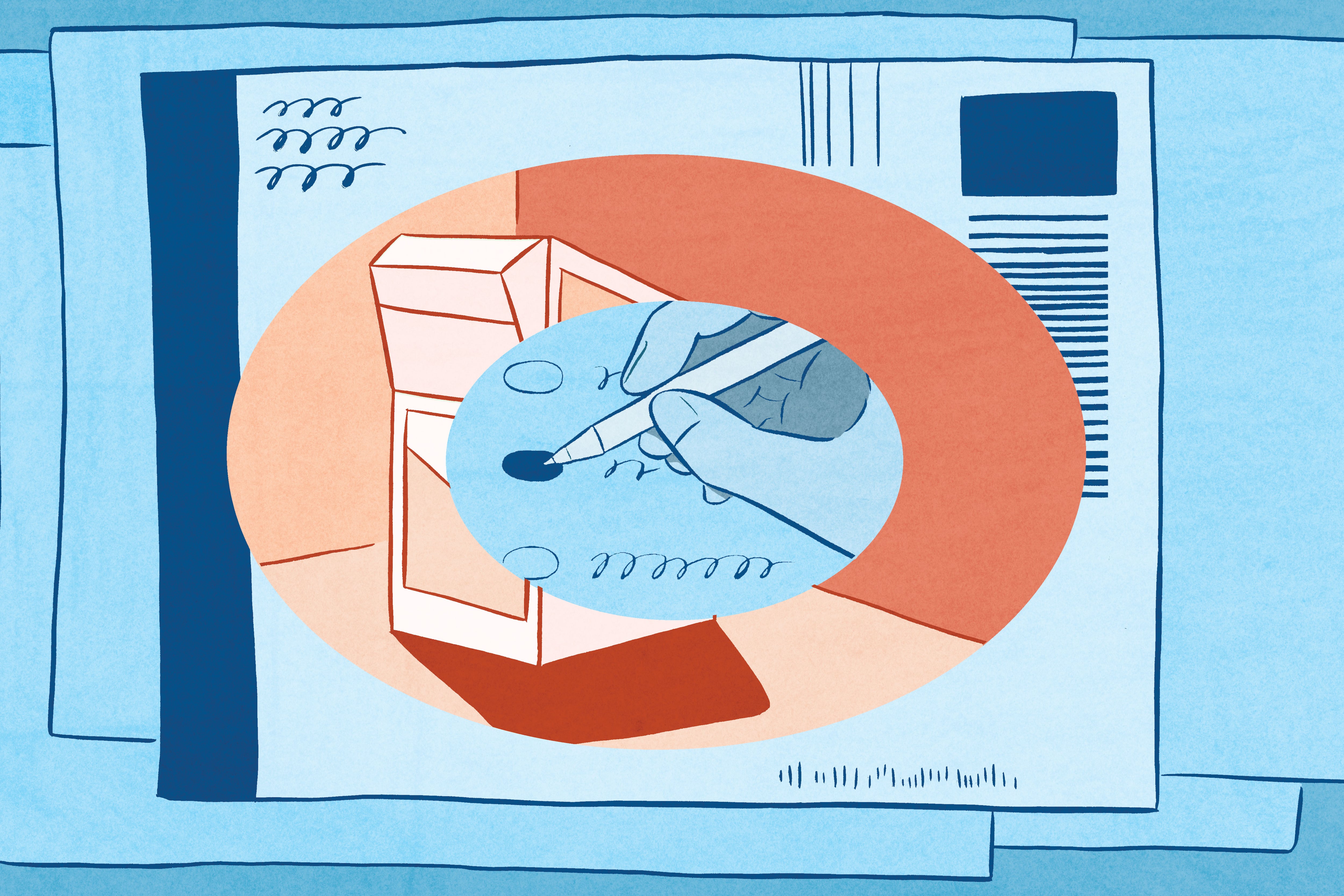Votebeat is a nonprofit news organization reporting on voting access and election administration across the U.S.
Pennsylvania voters did not have equal opportunities to cast or correct their ballots during the November 2022 election, the latter producing a disparity that disenfranchised hundreds of voters, a Spotlight PA and Votebeat analysis has found.
As part of a first-of-its-kind review, the news organizations contacted election officials in all 67 counties about policies regarding drop boxes and mail ballots that had disqualifying technical errors. The outlets focused on how counties treat mail ballots, as state law is silent on logistical details that directly impact how Pennsylvanians can vote and whether a person’s vote counts.
Spotlight PA and Votebeat also sought to understand the access voters have to physical polling places and to minutes of meetings held by county election boards that make critical policy decisions such as which ballots get counted and who gets a chance to fix their ballot.
The review found:
- At least a dozen counties gave voters the opportunity to fix flawed mail ballots after they were turned in, a process known as ballot curing.
- At least nine counties specifically forbade voters from coming into a county election office to fix a disqualifying error on a mail ballot like a missing date or signature on the outer envelope. Nearly 1 million registered voters live in those nine counties, and at least 1,599 mail ballots were rejected there for reasons including a missing date or signature, according to data from the Pennsylvania Department of State.
- At least eight counties proactively reached out to voters to tell them about fatal defects with their mail ballots, while six published lists of voters that needed to cure their ballots.
- Twenty-seven counties gave voters access to at least one round-the-clock drop box for mail ballots, while 40 — primarily in rural areas — required voters to either mail such a ballot or turn it in during daytime hours to an election office.
- Sixty-two counties exceeded a state recommendation on how many voters can be assigned to a precinct. The cap aims to ensure voters do not have prohibitively long wait times to cast a ballot.
- Nearly 40 county election offices do not make meeting minutes accessible online. Among those, four make the minutes available upon request or in person at the county election office.
Forty-six counties did not respond to the survey. Spotlight PA and Votebeat turned to publicly available data on the number of drop boxes, voters, and voting precincts in each county to supplement their review.
But information on ballot curing was often unavailable online, meaning the true number of people who weren’t allowed to fix their flawed mail ballots is likely higher than the news organizations could determine.
In Pennsylvania, the governor and legislature broadly set election rules. The last major overhaul of state law came in 2019 when former Democratic Gov. Tom Wolf signed Act 77, which created no-excuse mail voting.
The law, however, does not outline major aspects of mail voting such as drop boxes and ballot curing, a gap that has presented problems for the county officials who create policies and the election workers who must carry them out.
Local election officials have asked the governor and legislature to clarify the law for years. But while Wolf and the formerly GOP-controlled legislature agreed on proposals like allowing pre-canvassing — a policy in which election officials process mail ballots ahead of Election Day — they deadlocked on more contentious issues like expanding voter ID.
Ideally, Pennsylvania counties should make it as easy as possible to vote, said Khalif Ali, executive director of Common Cause Pennsylvania, a group that advocates for expanding public participation in the government and protecting voting rights.
“It’s the beauty and the pain that’s associated with the commonwealth,” Ali said. “We have essentially a number of fiefdoms and each of them has their own budgets, their own way of looking at the law, and applying that law on the ground level.”
A patchwork of policies
Take Sadsbury Township, Lancaster County, for example. Voters there were not allowed to fix errors on mail ballots such as missing dates, nor could they place those ballots in a drop box.
But their neighbors just over the county line in West Sadsbury Township, Chester County, were allowed to cure their ballots and had access to 13 drop boxes.
The differences in election administration often come down to the makeup of the boards of election. In most cases, those boards are partisan and populated by the county’s elected commissioners. In Lancaster County, the board is majority-Republican and has two members who have consistently questioned the security of drop boxes. Chester County’s board is majority-Democrat.
Overall, 1.7% of mail ballots cast in Lancaster County were rejected because they were mailed without a secrecy envelope, incorrectly dated, or missing a signature or date. In Chester County, that number was 1%.
(Those numbers were provided by the Department of State, whose data may be incomplete.)
Though the legislature acted with wide bipartisan support to allow no-excuse mail voting, some Republican lawmakers have since sought to curtail or eliminate the practice, a push in part due to baseless claims of election fraud spread by former President Donald Trump.
That conflict, as well as gray areas in state law, have resulted in lawsuits over the past two years that target mail voting.
In one, settled just a week before the November 2022 election, the Pennsylvania Supreme Court ordered counties not to count mail ballots with incorrectly dated or undated outer envelopes. Months later, in February, the high court reaffirmed that undated mail ballots should not be counted but left it up to individual counties to determine exactly what an incorrect date is.
The state Supreme Court last year was also asked to wade into the question of whether ballot curing should be allowed. An October decision permitted the practice but did not mandate it.
At least a dozen counties went ahead and allowed voters to cure ballots for reasons including a missing signature or date. Some went even further and tried to make voters aware of issues with their ballots.
Six counties — Allegheny, Chester, Erie, Northampton, Philadelphia, and Potter — published lists that named voters whose ballots had errors. These lists were also passed to third-party organizations, such as good-government groups or local political parties, so they could reach out to those voters independently.
Seven counties, including Chester, personally contacted voters with flawed ballots to direct them to their county election office.
“It is heartbreaking when you are canvassing mail-in votes and you can’t count them when there are so many steps to complete and [the voters] mess up one thing and their vote can’t be counted,” Chester County Solicitor Colleen Frens said.
The counties that did not allow voters to cure ballots provided a range of reasons for doing so, from not having enough staff to handle the extra work to believing the state Election Code does not allow for ballot curing.
The availability of drop boxes also varied widely across the state last fall.
Drop boxes were not available in 40 counties, where over 2.8 million registered voters live. Most of these counties are in rural areas where residents already must drive farther to reach a county election office.
Twenty-seven counties did offer drop boxes, though 15 of them only had only one drop box available. The counties that had multiple drop boxes tended to be in more populated areas, such as Philadelphia and its collar counties.
Lisa Schaefer, executive director of the County Commissioners Association of Pennsylvania, said that while all counties run elections that are consistent with state law, different interpretations of the Election Code and court decisions can lead to a wide array of practices.
“As we’ve seen, everything is kind of subject to interpretation, so the counties are doing their absolute best with what they have, but if we had some help from the state to fix some of these issues that would certainly be helpful,” she said.
In-person access
Access disparities also existed for people who chose to cast their ballot in person last November.
Pennsylvania does not collect data on the amount of time that people have to wait in line to vote. Without that data, voting advocates told Spotlight PA and Votebeat to examine the number of voters assigned to different precincts as a way to gauge possible overcrowding.
Pennsylvania’s Election Code states that each precinct should have between 100 to 1,200 people, though it does not specify how a county should determine the exact number. In practice, election directors told Spotlight PA they have the leeway to make their own choices.
In total, just under a quarter of the 9,155 precincts in Pennsylvania have over 1,200 voters assigned to them and 33.5% have over 2,400, according to a Spotlight PA and Votebeat analysis. Another 57 precincts have over 3,600.
Looking at how many voters are assigned to a precinct isn’t a perfect measure. Some election directors who spoke to Spotlight PA noted that staffing levels vary between precincts to deal with a higher volume of voters.
Pike County, a sprawling northeastern county with relatively few voters, had the highest median of voters per precinct, with over double the recommended number. But Valerie Barbin, a voter and poll watcher for the past two cycles in the county’s most populous precinct, said she hasn’t seen it cause any wait-time issues. That could be because less than 800 of the precinct’s more than 4,700 assigned voters cast a ballot last November.
“What’s also critical to the success of the precinct is that the counties are providing the appropriate resources,” said Jeff Greenburg, senior advisor on election administration to the good-government group Committee of Seventy and a former election director himself.
As part of the review, Spotlight PA and Votebeat also looked at how easy it was to access each county’s board of elections meeting minutes. Those minutes summarize what was discussed by county election officials during public meetings and can include information on contracts with companies to deliver mail ballots, and plans for the number and locations of drop boxes in a county.
Most counties don’t make these minutes easily accessible. Forty do not make them available online, though four of those counties responded in the survey that meeting minutes were available upon request or in person at a county election office.
Changes on the horizon?
Ali of Common Cause said that the different practices across the state favor some voters over others based on where they live. He argued that it violates the spirit of the Pennsylvania Constitution, which states “elections shall be free and equal.”
He emphasized that inconsistencies can discourage voters from participating in the process.
“We need to be able to share information and tell people exactly what’s going on,” Ali said.
Exactly how to change Pennsylvania’s election law to make it fairer has been debated over the past few years.
The Election Law Advisory Board, a group of county commissioners, state lawmakers, and advocates that studies election policies at the behest of the legislature, recently said in a report that “absolute uniformity across all counties would be difficult to achieve and maintain.”
Instead, it recommended that the General Assembly establish minimum requirements for counties that use drop boxes but not mandate their use statewide.
“The goal of this provision is to give counties the flexibility to have drop boxes but at the same time to have them as consistently administered as possible,” the report said.
The report also recommended that the legislature simplify the mail voting process by making secrecy envelopes optional and clarifying that failure to date the ballot should not be the sole reason one is thrown out.
Pennsylvania now has a new governor, Democrat Josh Shapiro, and the legislature is split between Democratic control in the state House and Republican control in the state Senate.
The executive and legislative branches would have to work together to stitch together the patchwork of election policies, but so far they have not committed to any particular actions.
Schaefer said her members are “very eager” for resolution on issues like ballot signatures, drop boxes, and pre-canvassing, and have been since shortly after the 2020 election.
“Unfortunately, I think that the spotlight that is on Pennsylvania because of the narrow distance between our political parties and how close our votes get, that puts a greater scrutiny, I think, on our operation,” she said. “These are things we’d love to be able to address so that every county could feel confident that they are interpreting the law the same way, and that the state would help to provide that clarity to us in the law.”
Carter Walker is a reporter for Votebeat in partnership with Spotlight PA. Contact Carter at cwalker@votebeat.org. Kate Huangpu is a reporter for Spotlight PA. Contact Kate at khuangpu@spotlightpa.org.






